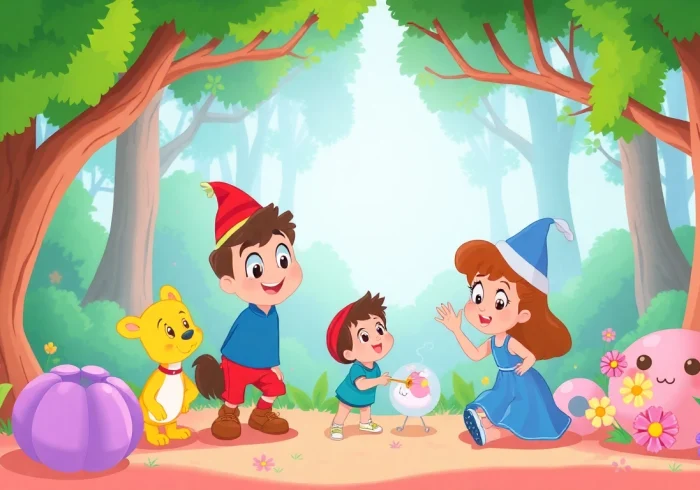Understanding Music Pitching
What is Music Pitching?
Music pitching, at its core, is the process of presenting your music to curators, playlist managers, and industry professionals, hoping to secure a spot in playlists or media features that can significantly boost your visibility and reach. This goes beyond simply sharing your tracks; it involves a strategic approach to showcasing your music’s unique qualities, the story behind it, and why it would resonate with listeners or fit a specific playlist. For independent musicians and artists, music pitching can be a vital avenue for gaining audience engagement and traction in a crowded industry.
The Importance of Music Pitching
In today’s digital music landscape, where thousands of songs are released daily, the need for effective music pitching cannot be overstated. Pitching your music effectively can open doors to opportunities such as:
- Increased Exposure: Being featured on popular playlists can introduce your music to a whole new audience.
- Industry Connections: Engaging with curators can lead to long-term relationships that might result in future collaborations or support.
- Fan Growth: Curated playlists not only help in marketing your music but also in growing your fanbase, enhancing your streaming and social media presence.
Thus, mastering the art of pitching is essential for anyone serious about advancing their music career.
Common Misconceptions About Music Pitching
Despite its significance, several misconceptions can hinder effective music pitching. Here are some prevalent myths:
- It’s All About Connections: While knowing the right people can help, a well-crafted pitch can overcome lack of connections.
- Submitting to Multiple Places is Best: Quality over quantity is vital. A targeted approach with personalized pitches often yields better results.
- Only Big Labels Can Pitch Successfully: Independent artists can successfully pitch their music. Authenticity and a unique sound can stand out even against the industry’s giants.
Preparing Your Music for Pitching
Choosing the Right Tracks to Pitch
The first step in effective music pitching is selecting the right tracks. Not every song in your catalog is suitable for every opportunity. Consider the following factors:
- Genre Fit: Understand the genres that curators cater to. Pitching a pop song to a metal playlist, for example, is unlikely to succeed.
- Current Trends: Analyze what type of music is trending in your desired playlists. Tools like Spotify’s Wrapped or trend settings on social media can provide insights.
- Track Quality: Ensure that the audio quality is pristine, with professional mixing and mastering. Poor sound quality can hinder even the best songs from being noticed.
Creating a Compelling Artist Profile
Your artist profile serves as the face of your music. A compelling profile is imperative. It should include:
- Artist Biography: Share your musical journey, influences, and what sets you apart from other musicians.
- Social Proof: Include links to past performances, features in magazines, or even social media following to showcase your engagement.
- Professional Photos: Visuals matter. Ensure you have high-quality images that resonate with your music style.
Curators are interested in the person behind the music, so make your profile engaging and authentic.
Formatting Your Submission
The format of your submission plays a crucial role in how your music is perceived. Here are some best practices:
- Clear Subject Line: Use the title of your song and your artist name. Example: “Song Title – Artist Name.”
- Brief Introduction: Start with who you are and why you’re pitching this particular track.
- Link to Your Music: Include a link to the song or a streaming service, and make it easy for the curator to access your music.
A well-structured submission will demonstrate professionalism and respect for the curator’s time.
Strategies for Effective Music Pitching
Identifying the Right Platforms and Curators
Not all platforms and curators are created equal. Research is vital to identify where your music fits best. Look for:
- Playlist Genre: Target playlists that align with your style and audience.
- Curator Credibility: Consider the curator’s reach and track record. Curators with a history of working with artists in your genre are more likely to take an interest.
- Submission Guidelines: Some playlists have specific guidelines or preferences for submissions. Adhering to these can increase your chances significantly.
Building Relationships with Playlist Curators
Beyond simple submissions, building relationships can significantly enhance your pitching efforts. Here’s how:
- Engagement: Follow curators on social media, comment on their posts, and engage positively with their content.
- Personalized Communication: When you do pitch, reference your past interactions or connections to make a memorable impression.
- Networking: Attend music events, workshops, and conferences to meet curators in person. Building rapport can go a long way.
Crafting a Captivating Pitch
The actual pitch is where your chances of success hinge. A captivating pitch is comprised of several elements:
- Personalization: Always tailor your pitch to the individual curator. Mention why you think your song fits their playlist specifically.
- Storytelling: Share the story behind the song. What inspired it? What emotions does it convey? Curators love narratives that resonate with listeners.
- Professional Tone: Keep your language professional yet personable. Avoid sounding overly casual or robotic.
Leveraging Digital Tools in Music Pitching
Using Submission Platforms
There are various platforms designed to simplify the submission process. Tools like SubmitHub and Daily Playlists can connect you to curators effectively. Pros include:
- Transparency: Many platforms offer tracking for submissions, letting you know when curators listen to your track.
- Access to Multiple Curators: SubmitHub, for example, allows you to pitch to many curators at once, increasing exposure opportunities.
Analytics for Improving Your Pitch
Analytics can provide insights into how your music is performing post-pitch. Focus on metrics such as:
- Streaming Rates: Monitor how your songs perform after being pitched, noting any spikes in streams.
- Listener Engagement: Evaluate listener behavior on your platforms. High engagement rates can inform your pitching approach.
Adjusting your strategy based on this feedback can optimize future pitches.
Utilizing Social Media for Exposure
Social media is a powerful tool for artists and an effective supplement to pitching efforts. Here’s how to harness it:
- Promotion of Upcoming Tracks: Use your channels to build anticipation around upcoming releases, tagging relevant curators.
- Engagement: Create content that invites followers to interact, whether through polls, giveaways, or live sessions.
- Content Marketing: Share behind-the-scenes content that engages fans and potential curators, showcasing your personality.
Measuring Success in Music Pitching
Setting Performance Metrics
Measuring the success of your music pitching efforts is crucial for continual improvement. Establish KPIs such as:
- Follow-up Actions: Track how many curators you receive feedback from after pitching.
- Playlist Inclusions: Monitor the number of playlists that include your music post-pitching.
Evaluating Feedback and Responses
Feedback can be invaluable, whether positive or negative. Understanding what resonates with curators can help refine your future pitches:
- Response Quality: Analyze the depth and specifics of any feedback given. Are curators interested in collaborating after hearing your music?
- Identifying Common Critiques: If certain issues arise repeatedly, address these proactively in your submissions.
Adapting Your Strategy Based on Results
A successful music pitching strategy is flexible. Adapt based on the results by:
- Experimenting with Different Tracks: If nothing is catching attention, consider whether there are other songs in your catalog that might perform better.
- Refining Your Pitch: Tweak your approach based on what’s working. Adjust how you brand and market yourself in the artist profile or pitch context.
In summary, music pitching is a powerful tool for any artist looking to expand their reach and connect with new audiences. By understanding the processes, preparing your music appropriately, and utilizing effective strategies, you can significantly enhance your chances of success in the vast landscape of the music industry.



